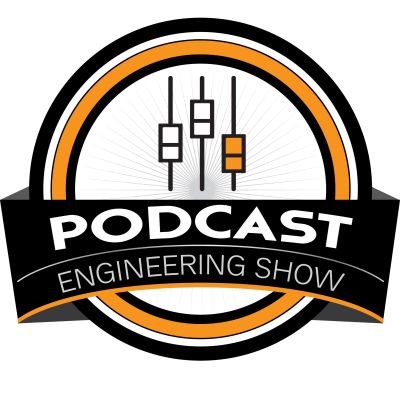This show focuses on the technical production of audio podcasts. Chris Curran chats with podcasters about their audio equipment, software and workflow to help you learn how to produce better sounding podcasts. You’ll also learn solutions to common audio issues as well as plenty of tips and tricks. By listening to this show you will gain a TON of knowledge and skills that will make a HUGE difference in your sound quality _and_ save you time! Subscribe/Follow today and start listening! Your host Chris Curran has a background in podcast production (Forbes, Dun & Bradstreet, J&J, etc) as well as music production (Sarah McLachlan, Jeff Buckley, Foreigner, etc). When he entered podcasting in 2012, he noticed that most podcasters (and producers) do not have a good understanding of fundamental audio engineering concepts, which sabotages the quality of their sound from the very beginning. This show, as well as Podcast Engineering School, helps podcasters and producers reach professional levels of podcast audio production.
https://podcastengineeringschool.com/category/show/
episode 141: Travis Vengroff
My guest is Travis Vengroff - producer, editor, and sound designer of audio dramas including Liberty, The White Vault, Vast Horizon, and the creator of Dark Dice - all under the umbrella of Fool and Scholar Productions.
And they were just announced as an honoree for the Webby Awards for Music and Sound Design in Podcasting!
Some of what we discussed:
- Power regulator
- Focusrite 6i6
- Rode NTK mic, tube, external power supply
- Asus computer
- MixCraft software to record.
- Reaper for mixing
- H4n
- H5n
- Mixcraft to edit
And here's a briefly overview of Travis' post-production workflow:
- All files are compiled onto a timeline in Mixcraft and EQ them to ensure a uniform quality.
- I'll do a dialogue cut using the multiple takes given to me (each actor records remotely) with a basic ambient layer or two for context.
- From there I'll make a second pass, adding ambiance and sound effects while fine-tuning all vocal tracks. If it's a stock audio track I've already recorded it goes in now. If it's something that needs to be recorded, I'll mark the timestamp. Processing takes place while I edit each sound.
- I make an additional pass to record general sound effects, and a few more passes while recording motion sounds, footsteps, and similar noises that people unconsciously make.
- The writer listens to the project for the first time and I make changes based on their suggestions.
- I'll do a final pass making fine tuning, then export everything as STEM tracks with pre-labels for SFX, CHAR (character), and AMB (ambiance), before zipping and sending to the mixing engineer. S/he will make a few passes, I'll get them a revision list, and we repeat the process until we get the final mastered track. The writer hears the second to last mix and offers feedback.
Thanks for sharing so much great info, Travis!
DID YOU KNOW........We exist for the purpose of helping you, so please comment below with any questions or remarks. We appreciate you listening.
Want to Start a Business or Have a Career as a Podcast Producer/Engineer?
Listen and Subscribe in Apple Podcasts, Spotify, Google Podcasts, iHeartRadio, Stitcher, TuneIn, Android, RSS, Email
